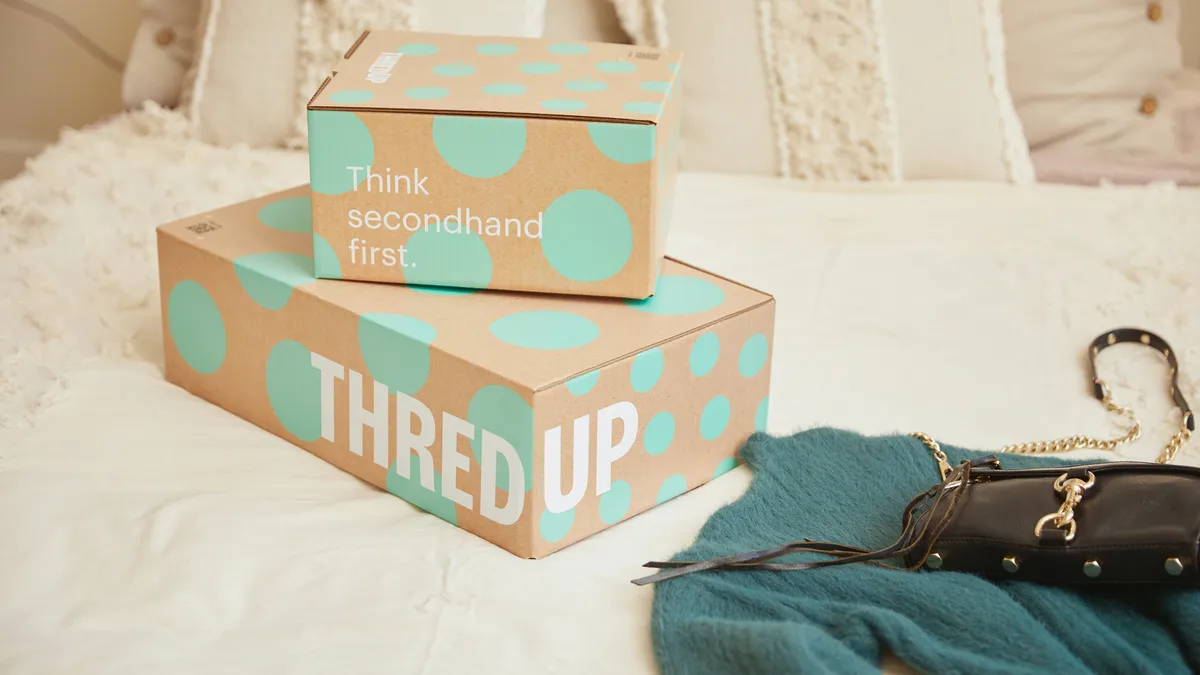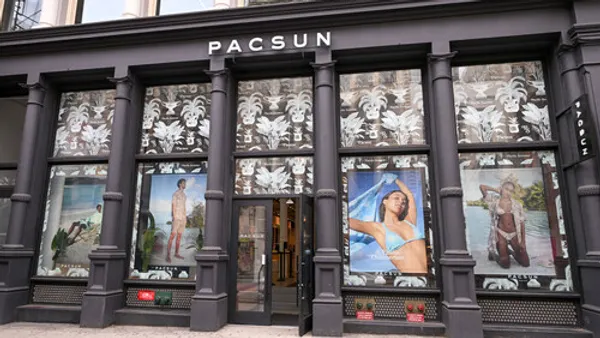Amid questions surrounding the profitability of online resale despite its growing popularity, two e-retailers of secondhand apparel on Tuesday announced they shrunk their losses in their most recent quarters.
Net loss at ThredUp narrowed to $18.8 million from $28.4 million a year ago, and at luxury-focused The RealReal narrowed to $41.3 million from $53.2 million a year ago. ThredUp’s revenue rose 8.2% to $82.7 million, while The RealReal’s revenue fell 15.3% to $130.9 million.
In their quests for profitable growth, both companies are emphasizing consignment sales and finding alternative sources of revenue. Consignment revenue at ThredUp rose 10% to $53.4 million, as the company made progress switching its European business and resale-as-a-service business to the model. At The RealReal consignment revenue was essentially flat, edging down only slightly to $96.6 million.
“The improvement in profitability was largely driven by our ability to maintain the higher-margin consignment business, while we purposely limit direct revenue,” The RealReal CEO John Koryl, who arrived earlier this year, said during a conference call with analysts.
Similarly, ThredUp Chief Financial Officer Sean Sobers said that gross margins in the U.S. improved after moving the resale-as-a-service business — where the company provides online resale to third-party retailers and brands — to a consignment model.
Other revenue sources
But both companies are also pursuing more lucrative means of raising revenue, outside of their core sales of used apparel.
At ThredUp, most prominent is resale-as-a-service. CEO and co-founder James Reinhart said that in Q2 the company added 11 retailers to that roster, including American Eagle Outfitters and SoulCycle. William Blair analyst Dylan Carden estimated that the resale-as-a-service offer represents about a quarter of the business and noted that it has other upsides.
“We believe RaaS provides a key awareness tool, allowing for lower marketing spend and customer acquisition over time, with capacity to leverage partner websites to list goods allowing for more shots on goal,” he said in a research note Wednesday.
ThredUp has also boosted margins and income with fees charged to sellers who send in bags of clothing. The company continues to experiment with this, including waiving or charging less for certain sellers and charging more for faster turnaround for others, but all are now subject to the fee, Reinhart said.
The RealReal is quickly scaling an advertising program launched in early July, Koryl said.
“What you're going to see is us continue to evolve ad placements on the site to more page types, potentially into e-mail and definitely into the app itself,” he told analysts. “So we have a lot of traffic that comes to us in a lot of various ways, be it mobile web or the app or actually desktop tablet. So as long as we're comfortable that the ad experience isn't negatively impacting the core experience and we can find new ways to monetize that traffic.”
However, UBS analysts Kunal Madhukar and Jason Park said in a client note on Tuesday that is “unlikely to move the needle” in the near term.
The companies’ moves come amid evidence that apparel resale is most profitable in stores. Research from WD Partners last year found that many consumers would welcome the opportunity to sift through secondhand items at a variety of big-box retailers or malls. So far, though, most retailers have partnered with ThredUp and similar resale-as-a-service firms to sell used goods online.















